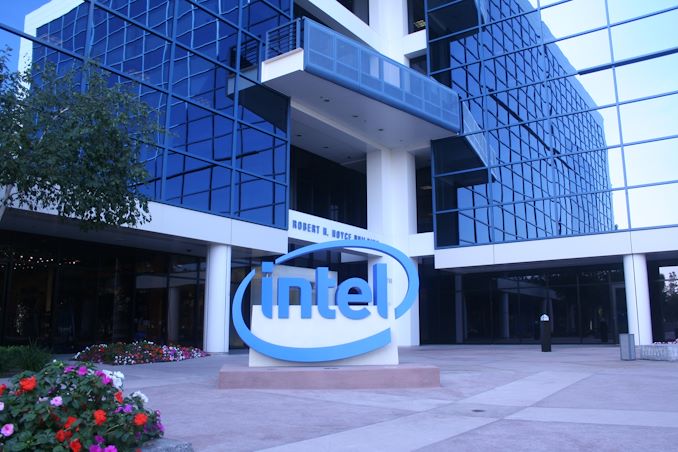Intel Reorganizes In Wake of 7nm Woes; Chief Engineering Officer Murthy Renduchintala To Depart
by Ryan Smith on July 27, 2020 5:30 PM EST
Coming in the wake of last week’s disclosure that their 7nm yields are roughly a full year behind schedule, Intel this afternoon has announced that they are reorganizing the technology side of the company. Key to this change is that Intel is breaking up its monolithic Technology, Systems Architecture and Client Group (TSCG) into several smaller groups, all of which will report directly to CEO Bob Swan. Meanwhile Intel’s chief engineering officer, Dr. Murthy Renduchintala, who had been leading the TSCG, will be departing the company at the end of next week. The reorganization is effective immediately.
As a result of this reorganization, TSCG is being broken up into five groups focusing on manufacturing and architecture. These are:
- Technology Development: Focused on developing next-generation process nodes. Led by Dr. Ann Kelleher.
- Manufacturing and Operations: Focused on ramping current process nodes and building out new fab capacity. Led by Keyvan Esfarjani.
- Design Engineering: A recently-created group responsible for Intel’s technology manufacturing and platform engineering. Led on an interim basis by Josh Walden while Intel searches for a permanent leader.
- Architecture, Software and Graphics: Developing Intel’s architectures and associated software stacks. Led by Raja Koduri (continuing).
- Supply Chain: Handling Intel’s supply chain and relationships with important suppliers. Led by Dr. Randhir Thakur (continuing).
It should be noted that while Intel’s brief announcement does not mention last week’s disclosure, the timing and resulting personnel changes are unmistakably related to the 7nm delay. Today’s reorganization is the second shuffle for Intel in as many months, as the company reorganized a number of product groups after Jim Keller departed for (honest to goodness) personal reasons.
Meanwhile, TSCG’s former president, Dr. Murthy Renduchintala, will be departing the company on August 3rd. Renduchintala joined Intel in 2015, and for most of the past half-decade has been responsible for overseeing all of TSCG’s efforts, and especially involved in the development of the company’s next-generation process nodes. Intel’s reorganization announcement makes no specific mention of Renduchintala beyond his date of departure, however it is difficult to imagine that this is anything other than Intel pushing out Renduchintala in light of their process woes. More than anything else, Renduchintala was the face of Intel’s monolithic, vertically-integrated design and manufacturing strategy; a strategy that is no more as Intel seriously investigates building parts of leading-edge processes at competing fabs.
Going forward, the task of developing Intel’s 7nm and 5nm process nodes will be led by Dr. Ann Kelleher. Kelleher gets the incredibly important (but less-than-enviable) challenge of getting Intel’s fab development process back on track, as Intel seeks to regain its crown as the world’s leading chip fab. Kelleher was previously the head of Intel’s manufacturing group, overseeing the recent ramp-up of Intel’s 10nm process. Meanwhile Dr. Mike Mayberry, a central figure in Intel’s labs who was already set to retire this year, will be staying on until then to assist in the transition.
Overall, while Intel’s reorganization is unlikely to dramatically change the company’s day-to-day operations, it’s very much the start of a new era for the company. As Intel’s ongoing manufacturing woes have driven them to look towards outside fabs for more products, the company’s traditional vertically-integrated structure is less than ideally suited for the task – and as much as Intel manufacturing would like to keep Intel-designed products within the company, Intel’s chip and architecture groups need to be able to freely look elsewhere. And this reorganization is going to be an important step in enabling that.
Source: Intel












140 Comments
View All Comments
Sivar - Monday, July 27, 2020 - link
Charlie Demerjian (semiaccurate.com) has been writing solid content that contrasts Intel's "everything is great" PR firehose for years. It looks like aside from some details, he was right.Intel hasn't even fixed their 10nm process yet, while competing fabs have volume production with high yields right today.
I am happy that Intel finally decided to admit there is a problem rather than pretending that yet another 14nm tweak will do everything customers need.
drexnx - Monday, July 27, 2020 - link
S/A has been beating the intel's dying drum for longer than it's actually been true though.Charlie said the same sorts of things during the Fermi days at nVidia and was dead wrong about where it would end up in that case.
canukstorm - Monday, July 27, 2020 - link
He's been on the money with respect to Intel's woes though.jeremyshaw - Monday, July 27, 2020 - link
So has Nostradamus. Don't mean everything he says has merit.jeremyshaw - Monday, July 27, 2020 - link
To be clear, not everything Charlie @ S/A says has merit; it should be blindingly obvious that nothing Nostradamus predicted has any merit.Arbie - Monday, July 27, 2020 - link
In many years of reading SemiAccurate, I've learned that Charlie Demerjian is (1) on target far more often than not; (2) far better connected than 99.9% of other tech journos; (3) far more knowledgeable on a wider range of tech than that same 99.9%. Overall, no site does his job better. That does not mean he's always right; just that I wish I could afford the $1K paywall.canukstorm - Monday, July 27, 2020 - link
He's been far more right than he's been right. He's earned his credibility.MrVibrato - Tuesday, July 28, 2020 - link
Right...Spunjji - Friday, July 31, 2020 - link
He exaggerates, yes. However: he's been 100% correct about their process woes right from the start, correct about what an absolute flop Atom was in the mobile market from the start, and correct about Apple's push to drop Intel in favour of their own processors.He was also right about first-gen Fermi dropping a bollock and on-the-ball with Bumpgate, too.
So yeah, you take everything he says with a pinch of salt - but you don't throw out the baby with the bathwater, either.
Spunjji - Friday, July 31, 2020 - link
"longer than it's actually been true" can also be read as "he was telling us the ship was sinking before it became obvious from the outside".It doesn't *have* to mean that, but in this case I'm pretty sure it does. The 14nm hiccups with Broadwell were quite skilfully glossed-over by Intel at the time, but they really were a sign of things to come. Same goes for the tells on Apple switching to their own processors.